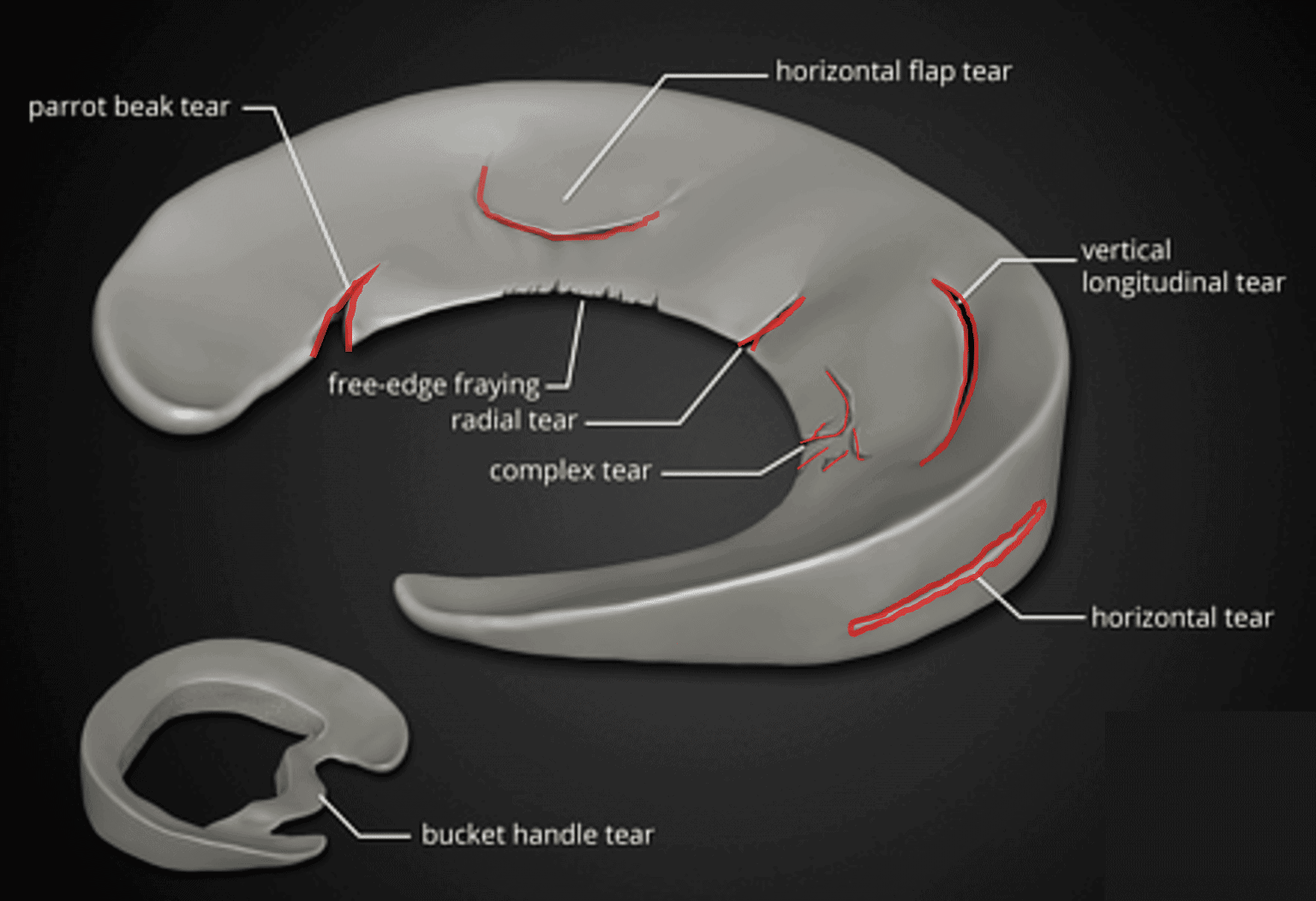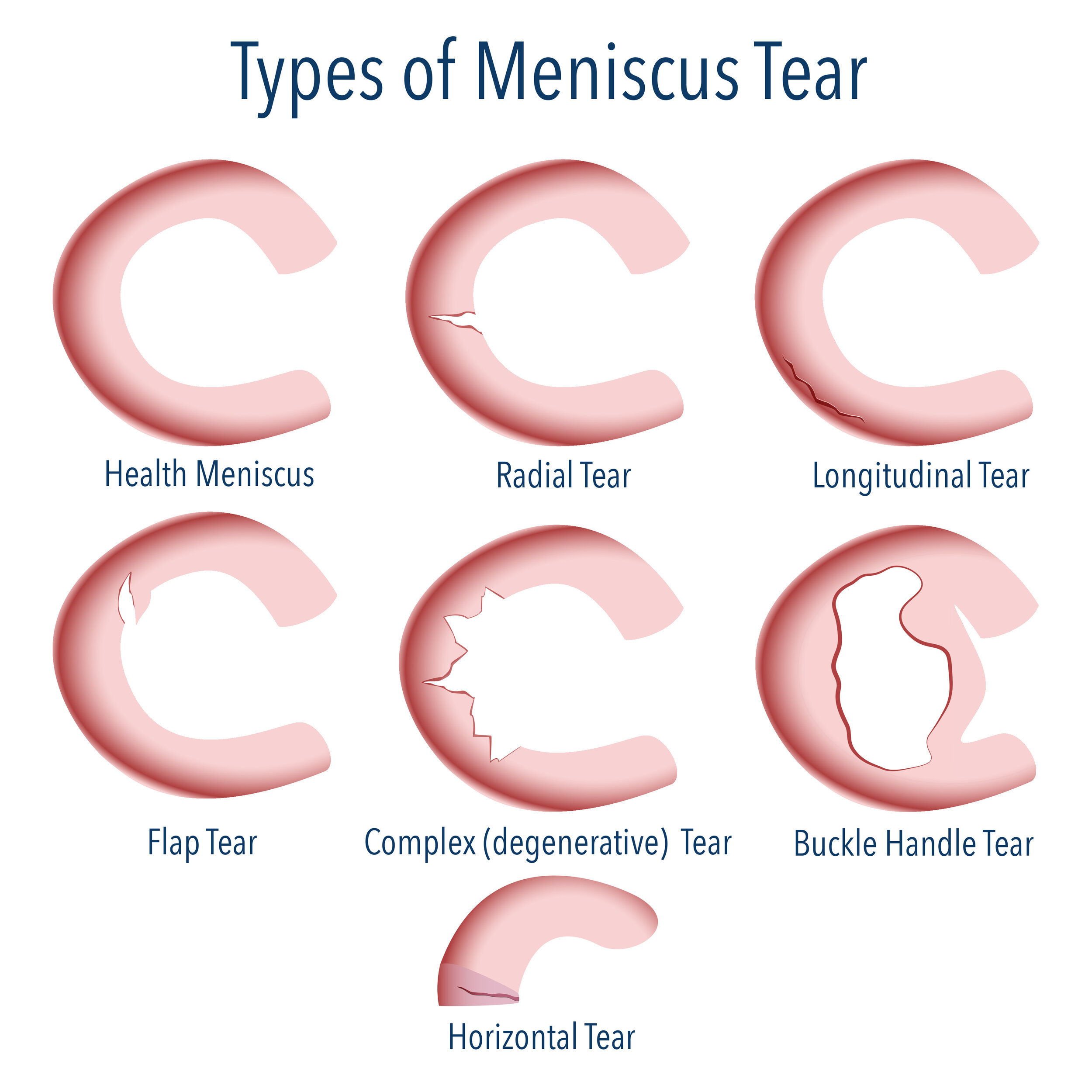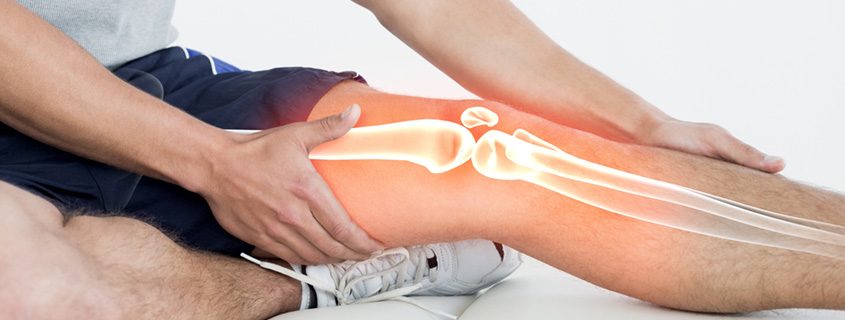Anatomy and Function of the Meniscus

The meniscus is a C-shaped piece of cartilage that acts as a shock absorber and stabilizer within the knee joint. It plays a crucial role in maintaining knee function and protecting the joint from injury.
Structure and Location
The meniscus is located between the femur (thigh bone) and the tibia (shin bone). It acts as a cushion, distributing weight evenly across the knee joint. There are two menisci in each knee: the medial meniscus on the inner side of the knee and the lateral meniscus on the outer side. The meniscus is made of tough, fibrous cartilage that is less flexible than the cartilage found in other parts of the body. This allows the meniscus to withstand the forces placed on the knee during activities such as walking, running, and jumping.
Role in Knee Function, Meniscus tear
The meniscus plays a vital role in maintaining knee function.
Weight Distribution and Shock Absorption
- The meniscus helps to distribute weight evenly across the knee joint, reducing the stress on the cartilage and bones.
- It also acts as a shock absorber, protecting the joint from the impact of forces during activities like walking and running.
Joint Stability
- The meniscus helps to stabilize the knee joint by deepening the socket that the femur sits in.
- This helps to prevent the femur from sliding out of place, especially during movements like twisting or pivoting.
Impact of Meniscus Tears on Knee Function
A meniscus tear can significantly impact knee function. The severity of the impact depends on the location and size of the tear.
Pain and Swelling
- Meniscus tears can cause pain, especially when bending or twisting the knee.
- Swelling around the knee joint is also common.
Locking or Catching
- A torn meniscus can cause the knee to lock or catch, making it difficult to straighten or bend the leg.
- This happens when a piece of torn meniscus gets trapped in the joint.
Instability
- A meniscus tear can weaken the knee joint, making it feel unstable or prone to giving way.
- This is because the meniscus helps to stabilize the knee joint.
Osteoarthritis
- A meniscus tear can increase the risk of developing osteoarthritis in the knee.
- This is because the meniscus helps to protect the cartilage in the knee joint, and a tear can damage the cartilage, making it more susceptible to wear and tear.
Types and Causes of Meniscus Tears

Understanding the different types of meniscus tears and their causes is crucial for effective diagnosis and treatment. A meniscus tear occurs when this C-shaped cartilage in the knee is torn, often due to a sudden twisting or impact. These tears can range in severity, from small, isolated tears to large, complex tears that can significantly affect knee function.
Types of Meniscus Tears
The location and nature of the tear determine its type.
- Horizontal Tear: This type of tear occurs along the width of the meniscus. It’s often a result of repetitive stress or aging.
- Radial Tear: A radial tear extends from the outer edge of the meniscus towards the center. It’s commonly caused by a sudden twisting force.
- Flap Tear: This tear results in a flap of meniscus tissue that can get caught in the knee joint, causing pain and instability. It’s often associated with trauma.
- Bucket Handle Tear: This severe tear involves a large portion of the meniscus being displaced, resembling a bucket handle. It’s typically caused by a forceful twisting or impact injury.
- Degenerative Tear: This tear occurs due to wear and tear on the meniscus over time. It’s often associated with aging and osteoarthritis.
Causes of Meniscus Tears
Meniscus tears can occur due to various factors, including:
- Sports Injuries: Activities involving twisting, pivoting, or sudden changes in direction, such as football, basketball, and skiing, can put significant stress on the meniscus, leading to tears. For example, a basketball player landing awkwardly after a jump shot could experience a meniscus tear.
- Degenerative Changes: As we age, the meniscus can become thinner and weaker, making it more susceptible to tears. These tears are often caused by minor activities like walking or bending.
- Trauma: A direct impact to the knee, such as a fall or car accident, can also cause a meniscus tear.
Mechanisms of Injury for Different Types of Meniscus Tears
The mechanism of injury for different types of meniscus tears can vary depending on the specific tear.
- Horizontal Tear: These tears are often caused by repetitive stress or aging, resulting from gradual wear and tear on the meniscus.
- Radial Tear: A sudden twisting force, often during a sporting activity, is the primary cause of radial tears. For example, a soccer player pivoting while dribbling could experience a radial tear.
- Flap Tear: A direct impact or sudden twisting force can lead to a flap tear. For instance, a car accident could cause a flap tear due to the sudden impact on the knee.
- Bucket Handle Tear: These tears are typically caused by a forceful twisting or impact injury, often involving a significant amount of force applied to the knee. For instance, a football player landing awkwardly after a tackle could experience a bucket handle tear.
- Degenerative Tear: These tears are a result of gradual wear and tear on the meniscus over time, often associated with aging and osteoarthritis.
Symptoms and Diagnosis of Meniscus Tears

A meniscus tear can cause a variety of symptoms, depending on the severity of the tear and the location of the injury. Some people may experience only mild discomfort, while others may have significant pain and difficulty walking.
Symptoms of a Meniscus Tear
The most common symptom of a meniscus tear is pain in the knee. This pain may be sharp and sudden, or it may be a dull ache that gradually worsens over time. Other symptoms include:
- Swelling: Swelling in the knee is another common symptom of a meniscus tear. This swelling is usually caused by fluid buildup in the joint.
- Locking: A locked knee occurs when the torn meniscus gets stuck between the femur and tibia, preventing the knee from straightening fully.
- Clicking or popping: A clicking or popping sensation in the knee may be felt when moving the joint. This occurs when the torn meniscus rubs against the bones in the knee joint.
- Stiffness: Stiffness in the knee joint is common after a meniscus tear, especially in the morning or after a period of inactivity.
- Difficulty with weight-bearing: A meniscus tear can make it difficult to put weight on the affected leg. This is because the tear can make the knee unstable and prone to giving way.
Diagnosing a Meniscus Tear
Diagnosing a meniscus tear usually involves a combination of physical examination, imaging tests, and, in some cases, arthroscopy.
Physical Examination
A physical examination is the first step in diagnosing a meniscus tear. The doctor will ask about your symptoms and medical history. They will also perform a physical examination to assess your knee joint’s range of motion, stability, and tenderness. Specific tests, such as the McMurray test, can help determine if a meniscus tear is present.
Imaging Tests
Imaging tests can help confirm the diagnosis of a meniscus tear and determine the severity and location of the tear. The most common imaging test used to diagnose a meniscus tear is an MRI (magnetic resonance imaging). An MRI provides detailed images of the soft tissues in the knee, including the meniscus.
Arthroscopy
Arthroscopy is a minimally invasive surgical procedure used to visualize the inside of the knee joint. It involves inserting a small camera and surgical instruments into the joint through small incisions. Arthroscopy can be used to diagnose a meniscus tear, as well as to repair or remove the torn portion of the meniscus.
Common Symptoms, Severity, and Potential Causes
The following table Artikels the common symptoms of a meniscus tear, their severity, and potential causes:
| Symptom | Severity | Potential Causes |
|---|---|---|
| Pain | Mild to severe | Twisting or rotating the knee, direct impact to the knee, age-related degeneration of the meniscus |
| Swelling | Mild to severe | Fluid buildup in the joint due to injury or inflammation |
| Locking | Moderate to severe | A torn meniscus fragment becoming trapped in the knee joint |
| Clicking or popping | Mild to moderate | The torn meniscus rubbing against the bones in the knee joint |
| Stiffness | Mild to moderate | Inflammation and pain in the knee joint |
| Difficulty with weight-bearing | Moderate to severe | Instability in the knee joint due to the meniscus tear |
A meniscus tear, a common knee injury, can significantly impact an athlete’s performance. Take Jahmyr Gibbs , the talented running back, who experienced a meniscus tear during his college career. While he recovered, the injury served as a reminder of the fragility of athletic pursuits and the importance of proper rehabilitation for a swift return to the field.
A meniscus tear is a common injury, particularly among athletes, and can significantly impact performance. The severity of the tear can vary, with some requiring surgery while others can be managed conservatively. To illustrate the impact of such an injury, consider the case of jj mccarthy stats , where a meniscus tear could potentially disrupt his promising athletic career.
Depending on the nature of the tear, the recovery process can be lengthy, requiring physical therapy and rehabilitation to regain full functionality.
